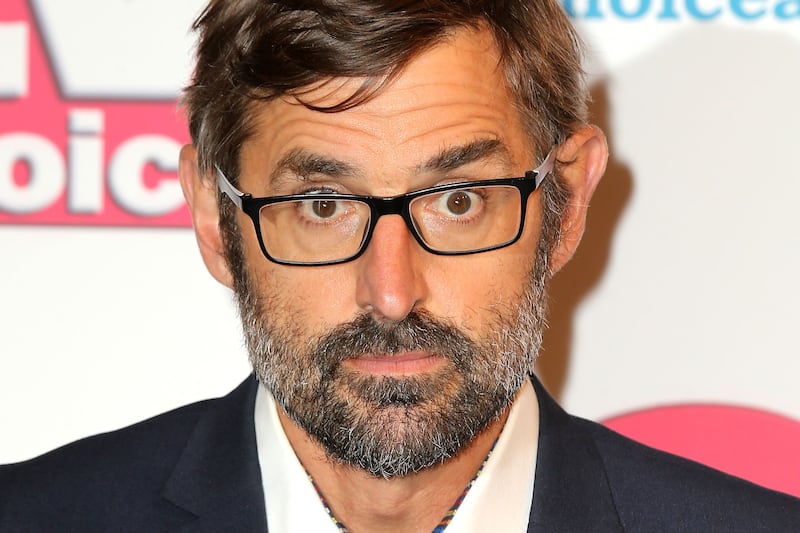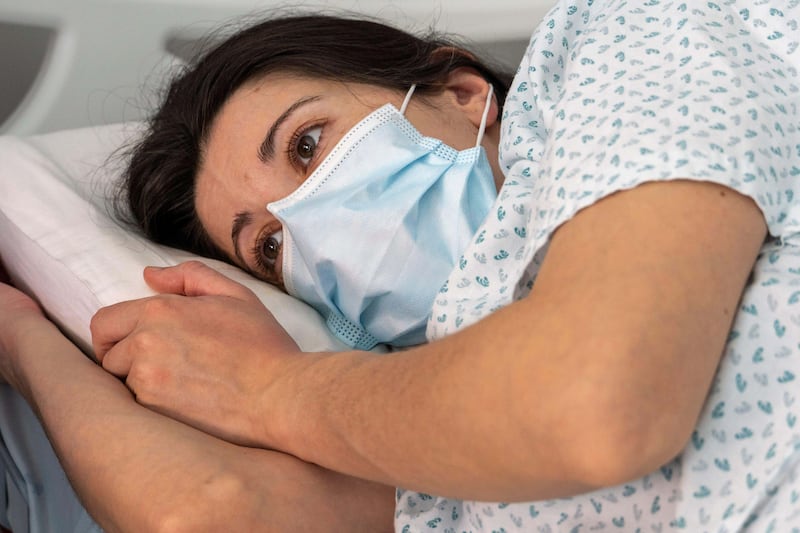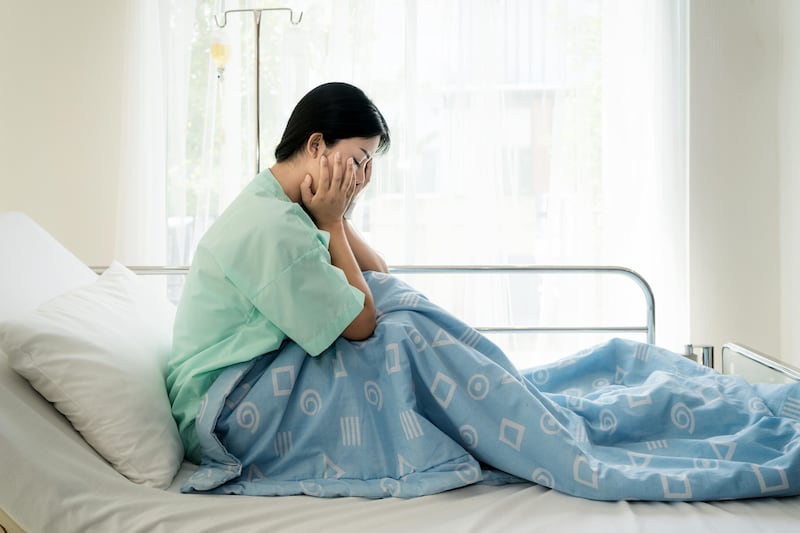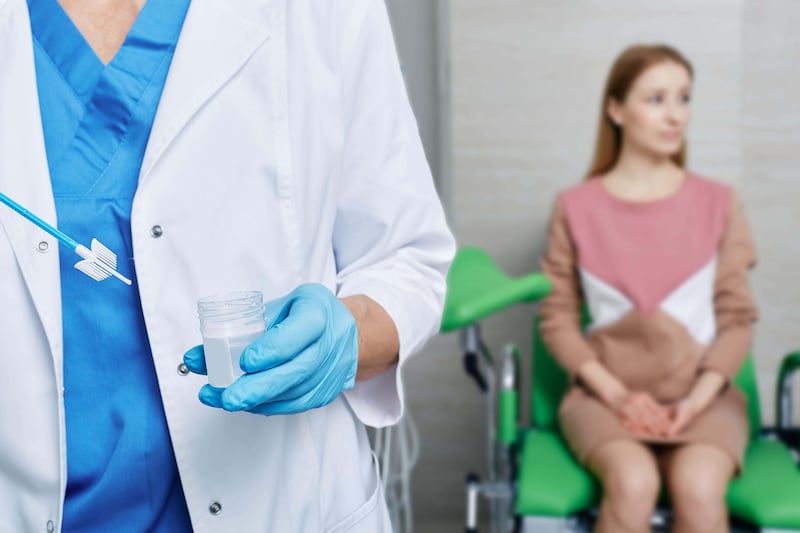FOLLOWING her diagnosis with liver cancer last June, 68-year-old Sheila Riley braced herself for painful and gruelling treatments.
Surgery, chemotherapy, radiotherapy and even ablation - where heat is used to destroy tumours - are some of medicine's most effective tools against cancer, but the potential side-effects can be hard to bear.
In fact, Sheila was spared these thanks to a radical new form of therapy that uses tiny bubbles of gas to destroy tumours within minutes and doesn't leave a mark on the body.
She was one of the first patients in the UK to undergo histotripsy, where focused ultrasound waves are directed from outside the body to destroy tumours by generating thousands of exploding gas bubbles.
So rapid is the procedure that her tumour was obliterated - painlessly - in under seven minutes.
"It was amazing," says the grandmother of eight, who had the treatment last August at St James's University Hospital in Leeds.
"I didn't need any medication - not even painkillers afterwards," adds Sheila, who lives in Bradford with her partner Frank (70).
"I was able to go shopping the next day, and two days after my treatment I was out with friends. It didn't even leave a mark on my skin."
It is now hoped the procedure can help those with tumours in other parts of the body.
Histotripsy was pioneered by researchers at the University of Michigan in the United States and relies on a process called cavitation - creating an empty space inside something solid - to eradicate cancer.
First, a beam of ultrasound energy is directed through the skin to the tumour site. As the beam hits the targeted spot, it activates thousands of pockets of gas that occur naturally in tissue throughout the body, even tumours, as a result of the respiratory process.
These tiny pockets of gas are usually dormant, but when blasted with the sound waves, they expand, vibrate and explode, forming a high-energy cloud of microbubbles in the tumour.
As they rapidly expand and collapse, the bubbles break up surrounding cancerous tissue, liquifying it into a solution that then gets passed out of the body as waste.
Unlike existing treatments such as microwave ablation, where a heat-generating probe is used to 'cook' tumour cells, there is no heat that might damage surrounding healthy tissue, making cavitation potentially safer.
This capacity for ultrasound to destroy tissue has been known about for years but was not previously adopted as a cancer treatment because it was too difficult to control the bubble clouds and avoid damaging healthy tissue.
However, the process has now been fine-tuned and the energy source can be better directed inside the tumour, avoiding the risk of nearby healthy tissue or organs being affected.
An international trial is now under way looking at histotripsy for liver cancer. The chief investigator, Professor Tze Min Wah, a senior consultant interventional radiologist at St James's University Hospital, believes cavitation could transform cancer treatment.
"Rather than using heat, radiation or surgery to remove the tumour, the bubble cloud created by histotripsy is so powerful that it ruptures the tumour but doesn't damage the tissue around it," she says.
Scientists chose to trial the cavitation procedure on liver cancers because of the poor five-year survival rate, but the technology has the potential to treat other organs, too, including the kidney, pancreas, breast, prostate and brain.
The procedure is performed under general anaesthetic and uses real-time ultrasound scans of the liver, which enable the radiologist to watch the tumour being located and obliterated.
A bedside machine with a robotic arm, made by a University of Michigan spin-off company, HistoSonics, is moved into position over the patient's abdomen.
Attached to the end of this arm is a transducer, a device that, once activated, converts electrical energy into ultra-sound energy.
"Once the tumour in the liver has been located, it becomes the target which the system locks on to," explains Professor Wah.
The machine's software then calculates how much energy is needed to create a powerful enough bubble cloud to kill the tumour, with focused ultrasound waves converging at a focal point in its centre.
"As the debris of the tumour has been liquified, it will be absorbed naturally by the body before passing out of it as waste," says Professor Wah.
By contrast, with conventional ablation treatment (which also uses image guidance), a needle is passed into the patient's abdomen and goes into the tumour. Once in place, the microwave energy heats up water molecules within the tumour, thereby destroying it.
The debris created becomes scar tissue, and although it's considered a safe treatment, there is a small risk that nearby blood vessels (or in the case of liver cancer, bile ducts) could be damaged by the heat.
So far, two patients have been treated with histotripsy in Leeds and two at the Freeman Hospital in Newcastle. Four hospitals in Europe are also taking part in this #HOPE4LIVER trial, involving 40 patients.
"It's very early days, but for the patients who have so far undergone histotripsy, it's encouraging, and it's exciting to treat patients without making an incision or even using a needle," says Professor Wah.
Professor Gail ter Haar, the team leader in therapeutic ultrasound at the Institute of Cancer Research, says: "I think the use of histotripsy is very exciting. In the past, we used to say don't use bubble activity as a treatment because it's unpredictable.
"But more recent research has shown that the use of acoustic cavitation, which is what the HistoSonics system is using, can now be controlled. You can now generate its energy where you want and keep it going to mechanically disrupt the tumour tissue.
"In the future, this treatment could be used for tumours in the prostate and kidneys, and tumours where bone or the ribcage will not disrupt the highly focused beam.
"But because ultrasound cannot pass through gas, it could not be used to treat deep-seated lung tumours, for example.
"The jury is probably still out on whether this will be more successful than thermal ablation, but it will be interesting to see if this treatment takes off."
Before her diagnosis and ground-breaking treatment, Sheila, a retired contracts manager, had been experiencing discomfort in her abdomen for three or four months, with "a constant dull pain" in her side which got worse if she lifted anything heavy and which woke her during the night if she turned over.
By April 2021 it was almost unbearable; after one car journey when she was wincing in agony every time the vehicle went over a speed bump, Sheila's partner Frank called an ambulance to take her to hospital. Tests revealed she had two liver tumours.
The larger tumour was treated with histotripsy; the smaller one was obscured by Sheila's ribs so would be invisible on the ultrasound and required ablation instead.
"After the histotripsy, I didn't feel any pain in my abdomen," says Sheila.
"But after having the conventional microwave thermal ablation in November last year, I stayed in hospital for a week and then was in agony for about five weeks. I was taking prescription analgesics as well as paracetamol that I bought to cope with the pain.
"At first, I couldn't even stand long enough to be able to peel the vegetables while making our evening meal."
Sheila, who is still regaining her strength following her ablation, is now looking forward to getting married to Frank later this year and some holidays, too. Follow-up checks have shown no signs of cancer on her liver.
"I feel so fortunate to have had this treatment," she says.
"I hope it can be used to help patients with other cancers, as well as those with the same cancer as mine. That really would be wonderful."
© Daily Mail






